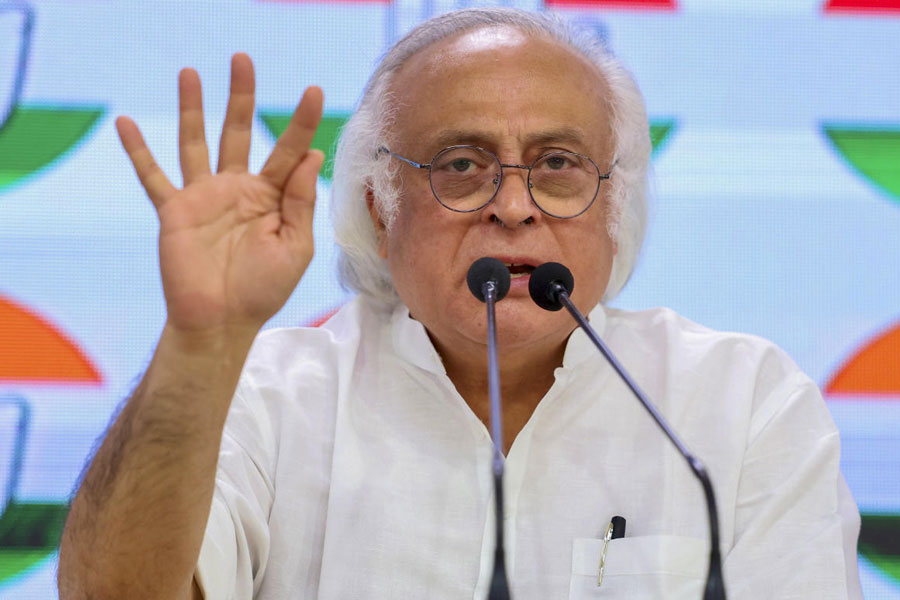Bhubaneswar / Kendrapara, Sept. 6: Jilted in love, a 30-year-old man left a teenager severely scarred by throwing acid on her in a Kendrapara village late last night.
The victim, who has suffered 40 per cent burns on her face, neck, waist, hands and chest, is being treated at the SCB Medical College and Hospital in Cuttack.
Sources said the girl was sleeping alongside her elder sister and niece when her neighbour, Alekh Mandal, 30, barged into their house at Badanaukana village under Rajnagar police limits and poured concentrated nitric acid on her.
The accused is on the run.
She was initially rushed to a local medical facility in a critical condition but had to be shifted to SCB hospital, which is equipped to handle burn cases, said chief district medical officer Shantilata Sharma.
In July, the Supreme Court’s had directed all states to provide Rs 3 lakh in compensation to acid attack victims towards medical treatment and aftercare rehabilitation.
However, district collector Niranjan Nayak appeared ignorant about this.
“We have no instruction from the government in this regard. However, we will extend some compensation to the victim from the district Red Cross society funds,” he said.
The district police today issued directions to police stations across the district to keep a tab on unauthorised sale of acid and corrosive substances, said Kendrapara police chief Rabi Narayan Behera.
There is no provision of over-the-counter sale of acid and corrosive substances in Kendrapara. However, jewellery shop owners mostly procure acid for manufacturing ornaments from registered traders in Cuttack and Bhubaneswar. Educational institutions and research laboratories receive acid for lab work through centralised procurement. Nitric acid used for such crimes is smuggled out from jewellery shops, said a police officer.
The accused, who is originally from Talchua village in Rajnagar, had settled in the victim’s neighbourhood two years ago.
With government-run health services being erratic, Mandal, who claimed to possess a medical degree, used to prescribe medicine to local residents. The villagers were quite fond of him and were shocked to learn of the attack.
Some of them, however, disclosed that he had been pursuing the victim, who had joined tailoring classes at Rajnagar, around 8km from her village.
Rajnagar police said it was a “pre-planned crime”.
In another incident in Paradip, a 40-year-old man and his son suffered minor burns when some unidentified persons threw acid at them in the Ichapur area.
Sanatan Patra and his son Sujit, 15, were asleep when the goons threw nitric acid through the window, police said.
Property feud is said to be the reason behind the attack.
Considering growing incidents of acid-related violence, the apex court, on July 18, had given state governments three months to implement new rules to check over-the-counter sale of acids, which includes furnishing identity cards.
Anyone under the age of 18 would not be able to purchase hydrochloric, sulphuric and nitric acids, which are used for cleaning purposes and are available for as low as Rs 20 a litre.
“We generally do not sell acid to customers unless they show us a proper authorisation letter for the purchase,” said Prashant Rout of Lab Chemicals in Bhubaneswar.
Odisha is yet to increase the amount of compensation for acid attack victims.
“Our compensation ranges between Rs 40,000 and Rs 1 lakh. After the Supreme Court’s directive, steps are being initiated to increase the amount to Rs 3 lakh,” said a home department official. The state government is also in touch with the Centre to bring uniformity in regulating the sale of acid.
MAIMED FOR EVER
 |
THE FIRST ACT
State’s first documented case of acid attack is in September 2000. Three youths chased and poured acid on face and body of a 16-year-old girl in Kalahandi district. State government paid victim Rs 30,000 in compensation. The accused were jailed for 10 years in 2004
IN RECENT PAST
May 12, 2011: On her way to computer classes, nineteen-year-old Cuttack girl attacked by two motorcycle-borne men. She suffered 20 per cent burn injuries on face, chest and abdomen. A Bhubaneswar woman, who worked with the victim earlier, said to be behind incident
Feb 12, 2010: Spurned lover attacks young woman in Berhampur. Victim suffers burn injuries on head, face and hands
July 27, 2009: “Mentally unsound” man throws acid, critically injures two girls waiting for public transport outside a Cuttack college
Feb 8, 2008: Eighteen-year-old girl suffers 60 per cent burns on face and chest when 35-year-old jilted lover throws acid on her at Hatina village in Kendrapada. The accused, a father of two, escapes
SCARY STATS
• New Delhi-based Stop Acid Attacks group says around three acid attack cases are reported every week from across India
• A 2011 Avon Foundation for Women report says number of acid attacks in India is on rise, while in Bangladesh legislation of tough laws helped curb such incidents by 20 per cent each year since 2002
SUPREME COURT DIRECTIVE
• On July 18, 2013, apex court gives state governments three months to implement new rules to check over-the-counter sale of acids
• Anyone under 18 barred from buying hydrochloric, sulphuric and nitric acids, which are used for cleaning purposes and are available for as low as Rs 20 a litre
• Shops will have to maintain log/ register of buyers' details and quantity sold
• Buyers must produce photo ID proof to buy the chemical
• Seller to submit details of sale to local police station within three days of transaction
• All states to pay acid attack victims a compensation of Rs 3 lakh towards medical treatment and aftercare rehabilitation
STATE-OF-AFFAIRS
• State government in talks with Centre to regulate sale of acid
• Ban on over-the-counter sale yet to be implemented in Odisha
• The three corrosive acids — hydrochloric, sulphuric and nitric — mostly bought for toilet-cleaning and jewellery-polishing purposes
• In Odisha, compensation ranges between Rs 40,000 and Rs 1 lakh. Steps have been initiated to raise it to Rs 3 lakh
• Prior to the Supreme Court directives, Odisha had written to Union home ministry listing difficulties in regulating sale of acid as its manufacture, storage and sale was a pan-Indian phenomenon










